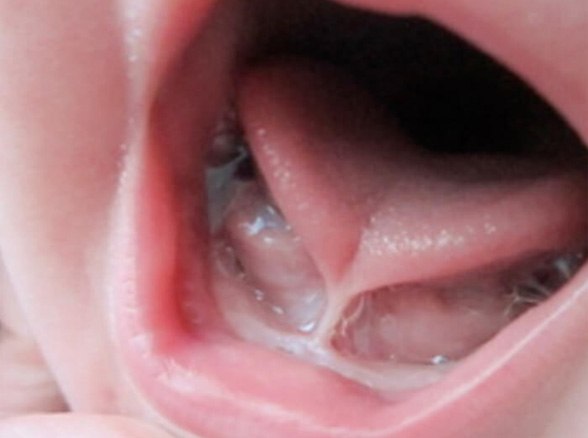Lip & Tongue-Tie Treatment – Coppell, TX
Giving the Lip & Tongue Greater Movement
A child’s ability to use their lips and tongue is essential. Whether it is eating, speaking, or breathing, any restricted motion will create challenges that can make daily living much more difficult. Fortunately, during a new patient exam, Dr. Steele and our team can examine these areas of the mouth to determine if lip and tongue-tie treatment is necessary. If so, she will refer you to an outside specialist so that a frenectomy can be performed. If you’re interested in learning more, call our office to schedule an appointment.
Why Choose Dr. Linda Steele For Lip and Tongue-Tie Treatment?
- We Partner with Local Specialists for Frenectomies
- We Treat Infants, Children, and Teenagers
- We Are In-Network with Dental Insurance Companies
How Do Lip and Tongue-Ties Develop?

It’s unlikely that a child will have both a lip and tongue-tie, but they are most likely found and diagnosed during infancy. When the band of tissue located beneath the tongue or behind the upper lip appears thick and offers limited movement, it’s important that it be removed before symptoms worsen. But why do they form in the first place?
These TOTS as they’re also known (Tethered Oral Tissues) form while a baby is still in the womb. If it does not stretch enough, it can become restricted, causing:
- A child to unsuccessfully latch while attempting to nurse
- Extreme colic or acid reflux
- Nursing to be prolonged
- The baby to fall asleep while trying to nurse
- It to be difficult for the baby to hold a pacifier
- Intense pain for mothers who are trying to breastfeed
- Blocked or clogged milk ducts
Why Is It Important to Treat Lip & Tongue-Ties?

Treating a lip or tongue-tie is important because allowing it to remain restricted can have a negative impact on a child, teenager, or adult as they grow older. Speaking and breathing are two primary concerns as well as eating.
Without treatment, there is the possibility that your child will:
- Develop a large gap between their teeth, which can cause them to feel self-conscious
- Have trouble swallowing food
- Likely breathe through their mouth and experience issues with a sleep-breathing disorder
- Suffer from a speech impediment
Lip & Tongue-Tie Treatment

To treat this type of problem, there is a simple solution – a frenectomy. During a regular examination, Dr. Steele and our team will check your child to see if they have a lip or tongue-tie. If they do, we will refer you to a local specialist who is skilled and equipped to provide this type of treatment.
Using specialized instruments, the process can be completed in little time, leaving your child to feel little-to-no pain at all. Once the tissue is released, your child will notice an immediate improvement in their ability to move their lip and/or tongue more freely.
This will drastically improve their quality of life, allowing them to eat, speak, and breathe with greater ease.
Lip and Tongue-Tie FAQs
How will you keep my baby still for the frenectomy/
Naturally, Dr. Steele and our team want your baby to be comfortable throughout the procedure; however, they do tend to wiggle. Since precision is important during a frenectomy, babies will likely be swaddled snugly so that they remain still during the procedure. This will also help to keep them comfortable so that they do not experience much discomfort.
What should I do after my child’s lip or tongue-tie has been treated?
After a frenectomy, it is possible (slight risk) that the tissue will reconnect. This is why we recommend performing some mild stretches for a few days after the procedure. Before leaving the office after the frenectomy, we will show you how to prevent reattachment. The process involves using clean hands and taking the upper lip or tongue and gently raising it upward for a few seconds. You’ll then want to gently swipe a clean finger underneath the lip or tongue from side to side a few times a day for 2-3 days. If it is necessary, pain medication can be administered as instructed.
How long does it take to see improvement after a frenectomy?
Once your child’s lip or tongue-tie has been released, they should experience greater oral movement and function almost immediately. For babies, they should be able to latch instantly, but it may take a few feedings before your little one is able to correctly nurse. When it comes to children and adults, more therapy may be required if speech is an issue.
What are the dangers of doing a frenectomy yourself?
Although it might seem as if snipping the banded tissue underneath the tongue or behind the upper lip is “no big deal,” it is. Using scissors or a knife is not a good idea. While you may prefer to take a DIY approach, the procedure itself can become dangerous if you do not do it correctly. Apart from the potential of cutting too much tissue, which could lead to excessive bleeding and pain, there is the possibility of infection. It’s not worth the risk, so you should expect to leave it to the professionals if your child needs a frenectomy.

